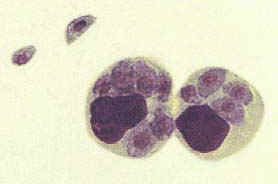Detection of Toxoplasma gondii
互联网
569
Toxoplasma gondii is an important intracellular protozoan that is the causative agent of toxoplasmosis in humans and animals. Toxoplasmosis is a zoonosis and is normally caught by eating undercooked infected meat or by ingestion of oocysts excreted by its definitive host, the cat. It is responsible for abortion and congenital defects in humans and is an important cause of abortion in domestic livestock, especially sheep, goats, and pigs. Infection in farm animals poses a risk to public health, as well as causing economic losses to the farming industry. T. gondii infection is established by rapid multiplication of the tachyzoite stage of the parasite. Although generally effective, the immune response does not completely eliminate the parasite; instead the tachyzoites differentiate into bradyzoites that form quiescent cysts in the brain and other tissues causing chronic infection that persists for the lifetime of the host (1). Infection with T. gondii is extremely common (20-80% prevalence in Europe and North America), but the majority of people show no overt clinical symptoms. Immunosuppression, however, rapidly leads to the breakdown of the tissue cysts, recrudescence of infection, and development of toxoplasmic encephalitis (TE). Since no drugs are available that are effective against chronic infection, the tissue cysts remain a life-long risk for reactivation of acute toxoplasmosis. TE is one of the major opportunistic infections of the central nervous system, it is rapidly progressive and fatal if not treated.







